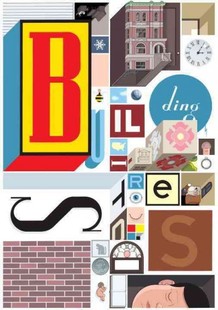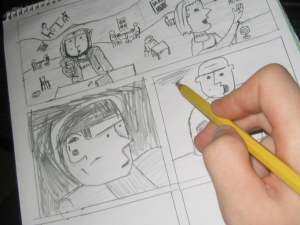
In comics studies, sequential art is a term proposed by comics artist Will Eisner to describe art forms that use images deployed in a specific order for the purpose of graphic storytelling or conveying information. The best-known example of sequential art is comics.
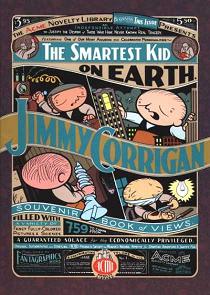
Acme Novelty Library is a comic book series created by Chicago cartoonist Chris Ware. Its first issue appeared in 1993. Published from 1994 by Fantagraphics Books and later self-published, it is considered a significant work in alternative comics, selling over 20,000 copies per issue.

Maus, often published as Maus: A Survivor's Tale, is a graphic novel by American cartoonist Art Spiegelman, serialized from 1980 to 1991. It depicts Spiegelman interviewing his father about his experiences as a Polish Jew and Holocaust survivor. The work employs postmodern techniques, and represents Jews as mice and other Germans and Poles as cats and pigs respectively. Critics have classified Maus as memoir, biography, history, fiction, autobiography, or a mix of genres. In 1992, it became the first and only graphic novel to win a Pulitzer Prize.

Franklin Christenson "Chris" Ware is an American cartoonist known for his Acme Novelty Library series and the graphic novels Jimmy Corrigan, the Smartest Kid on Earth (2000), Building Stories (2012) and Rusty Brown (2019). His works explore themes of social isolation, emotional torment and depression. He tends to use a vivid color palette and realistic, meticulous detail. His lettering and images are often elaborate and sometimes evoke the ragtime era or another early 20th-century American design style.

Daniel Gillespie Clowes is an American cartoonist, graphic novelist, illustrator, and screenwriter. Most of Clowes's work first appeared in Eightball, a solo anthology comic book series. An Eightball issue typically contained several short pieces and a chapter of a longer narrative that was later collected and published as a graphic novel, such as Like a Velvet Glove Cast in Iron (1993), Ghost World (1997), David Boring (2000) and Patience (2016). Clowes's illustrations have appeared in The New Yorker, Newsweek, Vogue, The Village Voice, and elsewhere. With filmmaker Terry Zwigoff, Clowes adapted Ghost World into a 2001 film and another Eightball story into the 2006 film, Art School Confidential. Clowes's comics, graphic novels, and films have received numerous awards, including a Pen Award for Outstanding Work in Graphic Literature, over a dozen Harvey and Eisner Awards, and an Academy Award nomination.

Jimmy Corrigan: The Smartest Kid on Earth is a graphic novel by American cartoonist Chris Ware. Pantheon Books released the book in 2000 following its serialization in the newspaper Newcity and Ware's Acme Novelty Library series.
Gary Panter is an American cartoonist, illustrator, painter, designer and part-time musician. Panter's work is representative of the post-underground, new wave comics movement that began with the end of Arcade: The Comics Revue and the initiation of RAW, one of the main instigators of American alternative comics. The Comics Journal has called Panter the "Greatest Living Cartoonist."

The Airtight Garage is a lengthy comic strip work by the artist and writer Moebius. It first appeared in discrete two-to-four-page episodes, in issues 6 through 41 of the Franco-Belgian comics magazine Métal Hurlant from 1976 to 1979, and later in the American version of the same magazine, Heavy Metal, starting in 1977. It was subsequently collected as a graphic novel in various editions.

Craig Matthew Thompson is an American graphic novelist best known for his books Good-bye, Chunky Rice (1999), Blankets (2003), Carnet de Voyage (2004), Habibi (2011), and Space Dumplins (2015). Thompson has received four Harvey Awards, three Eisner Awards, and two Ignatz Awards. In 2007, his cover design for the Menomena album Friend and Foe received a Grammy nomination for Best Recording Package.

It's a Good Life, If You Don't Weaken is a graphic novel by Canadian cartoonist Seth. It appeared in a collected volume in 1996 after serialization from 1993 to 1996 in issues #4–9 of Seth's comic book series Palookaville. The mock-autobiographical story tells of its author's obsessive search for the work of a fictional forgotten cartoonist.

Carol Tyler is an American painter, educator, comedian, and eleven-time Eisner Award-nominated cartoonist known for her autobiographical comics. She has received multiple honors for her work including the Cartoonist Studio Prize, the Ohio Arts Council Excellence Award, and was declared a Master Cartoonist at the 2016 Cartoon Crossroads Columbus Festival at the Billy Ireland Cartoon Library & Museum.

Dash Shaw is an American comic book writer/artist and animator. He is the author of the graphic novels Cosplayers, Doctors, New School, and Bottomless Belly Button, published by Fantagraphics. Additionally, Shaw has written Love Eats Brains published by Odd God Press, GardenHead published by Meathaus, The Mother's Mouth published by Alternative Comics, and BodyWorld published by Pantheon Books.
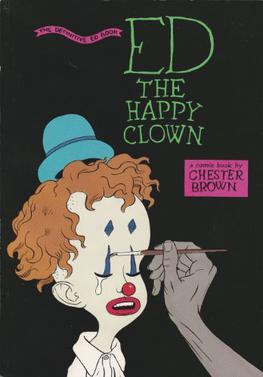
Ed the Happy Clown is a graphic novel by Canadian cartoonist Chester Brown. Its title character is a large-headed, childlike children's clown who undergoes one horrifying affliction after another. The story is a dark, humorous mix of genres and features scatological humour, sex, body horror, extreme graphic violence, and blasphemous religious imagery. Central to the plot are a man who cannot stop defecating; the head of a miniature, other-dimensional Ronald Reagan attached to the head of Ed's penis; and a female vampire who seeks revenge on her adulterous lover who had murdered her to escape his sins.

Wizzywig is an American comic book series written and drawn by Ed Piskor. It deals with Kevin J. "Boingthump" Phenicle, Jr. a young prodigy who becomes fascinated with social engineering, phone phreaking, and eventually computer hacking.
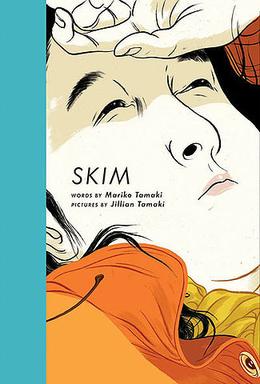
Skim is a Canadian graphic novel written by Mariko Tamaki and drawn by Jillian Tamaki. Set in 1993, in a Toronto Catholic girls high school, it is about an outsider girl called Skim.
Comics has developed specialized terminology. Several attempts have been made to formalize and define the terminology of comics by authors such as Will Eisner, Scott McCloud, R. C. Harvey and Dylan Horrocks. Much of the terminology in English is under dispute, so this page will list and describe the most common terms used in comics.

Katie Skelly is an American comics artist and illustrator. She is best known for her graphic novels My Pretty Vampire, Maids, and Nurse Nurse.
Raw Books & Graphics is an American publishing company specializing in comics and graphic novels. Operating since 1978, it is owned and operated by Françoise Mouly. The company first came to prominence publishing Raw magazine, co-edited by Mouly and her husband, cartoonist Art Spiegelman. In the 1980s the company published graphic novels, and with the formation of Raw Junior in 1999, branched into children's comics with Little Lit and Toon Books.

Delilah Dirk is a series of action adventure graphic novels following adventures of the titular character, Delilah Dirk. Written and illustrated by Tony Cliff, Delilah Dirk started as a webcomic, and now consists of three full graphic novels and one shorter story.
